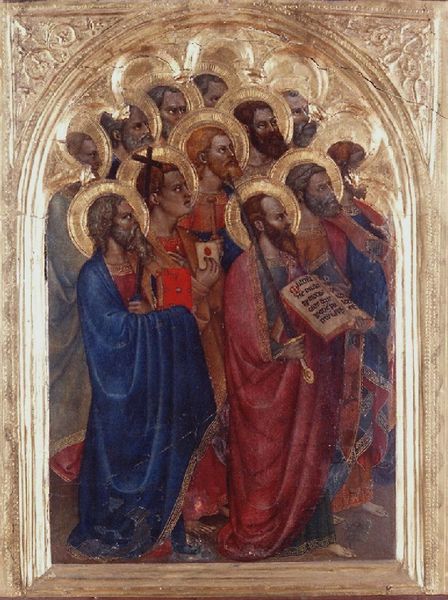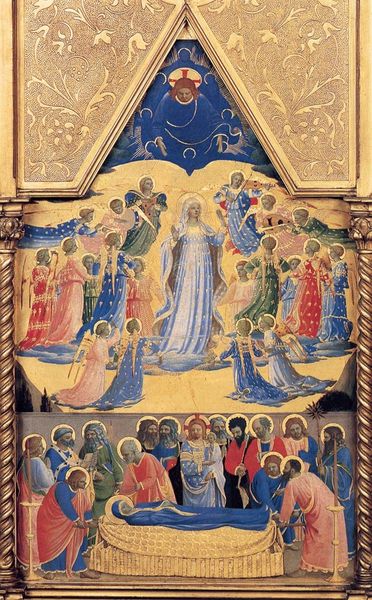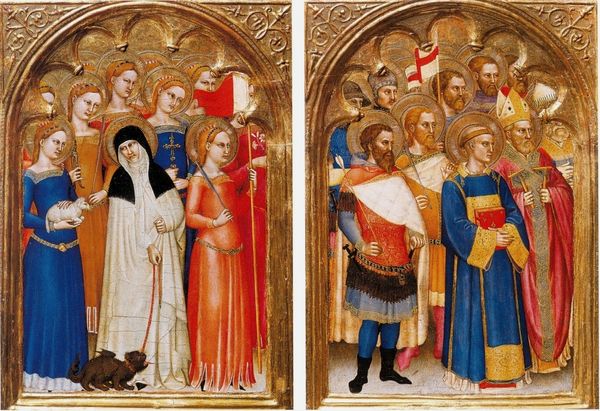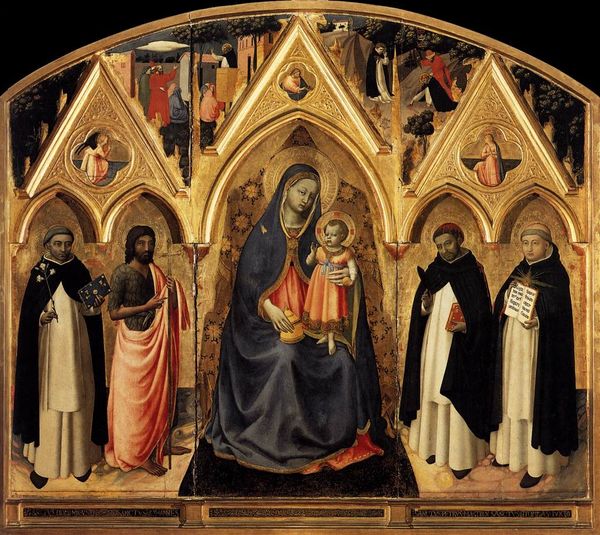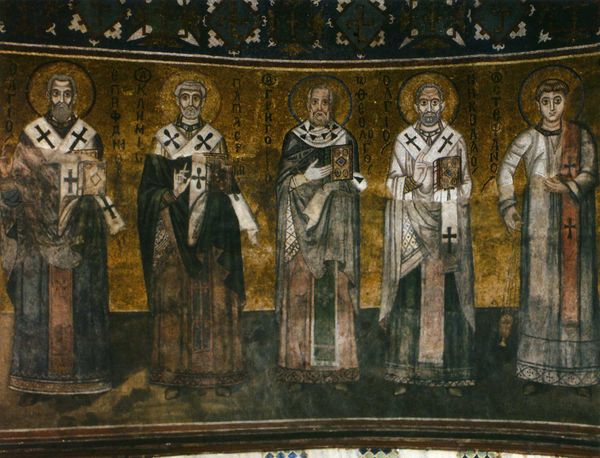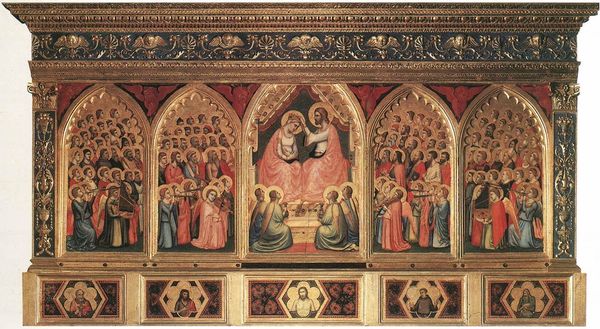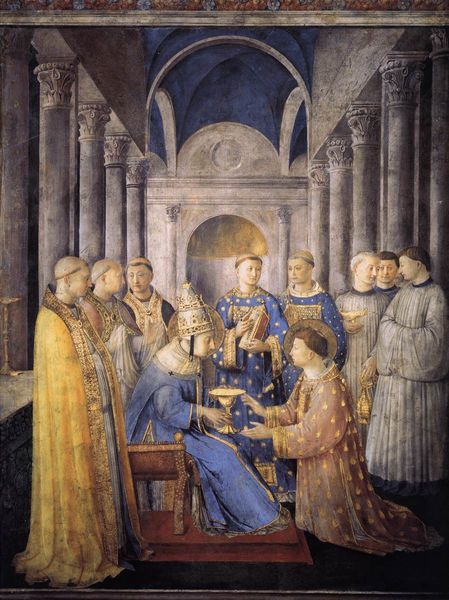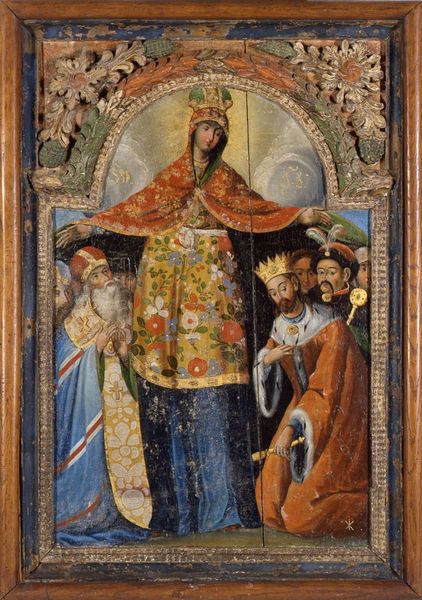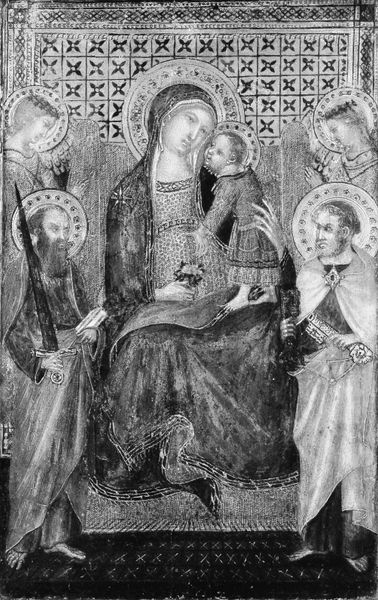
panel, tempera, painting
#
portrait
#
panel
#
tempera
#
painting
#
holy-places
#
figuration
#
oil painting
#
history-painting
#
academic-art
#
italian-renaissance
Copyright: Public domain
Curator: This panel, made with tempera, offers a window into fourteenth-century Florentine painting. The artist, Giovanni da Milano, likely crafted this piece circa 1360. Its composition immediately strikes you. Editor: It feels quite formal and restrained, doesn't it? There’s a stillness, almost a posed quality, in the figures. A sense of idealized order rather than dynamic movement. They almost feel like icons rather than living individuals. Curator: That’s an excellent observation. Each figure carries a distinct attribute: the bishop's crozier, the knight's sword, a banner—visual cues pointing to roles within a larger societal structure. Consider too the symbolism embedded in their garments: the regal reds and blues, indicating status, and their arrangement… there is a silent language. Editor: I am particularly drawn to the limited palette. The restrained color use certainly focuses the attention on the facial expressions—however, in the context of the era, these idealized figures seem exclusively male. It raises questions for me about how power and representation were visibly coded. Curator: Undoubtedly, it reflects a patriarchal society, and the imagery echoes deeply held notions of virtue and authority during this time. But observe their faces closely; there is nuance in how they are portrayed –strength, piety, but also a sense of quiet introspection. Editor: Yes, and there's a clear hierarchy present too; the figure with the bishop’s miter is situated higher than most, asserting clerical authority. It also makes me consider those absent voices—where are the women? Where are other perspectives that aren't centered here? Curator: Indeed. This panel serves not only as a devotional piece, but also as a social document, reflecting the power dynamics inherent to the time. Visual memory as a mirror and an echo... it's something worth considering. Editor: I'm struck how the panel can provoke questions, compelling us to re-examine social assumptions embedded in art historical narratives. It is up to us to view the world through multiple critical lenses, engaging not just with what is visible, but also with that which has been omitted.
Comments
No comments
Be the first to comment and join the conversation on the ultimate creative platform.
